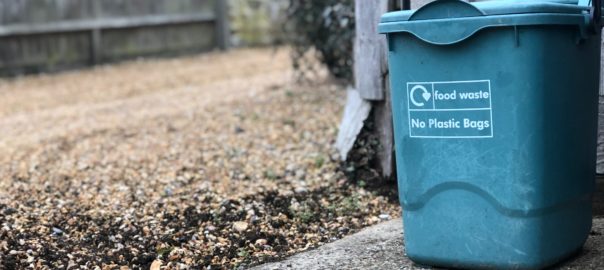A lot of us are developing a new found respect for the planet. You may be one, who like me, are using that respect and a little free time to start a garden. I don’t have even a tint of green on my thumbs, but I’ve found composting at home to be lifesaving!
While composting has been talked about a lot the last few years, it has always seemed so cumbersome, so involved – but I’ve recently learned that it doesn’t have to be. If you can commit to a hand shovel and a square foot of your kitchen, you can start composting. Diverting materials from landfills is getting increasingly easier. Wherever you are on your composting journey, we hope you can use one of these ideas.
Why is composting important?
Composting is important for several reasons, including:
- Reducing waste: Composting is a way to divert organic waste from landfills, where it can produce methane, a potent greenhouse gas that contributes to climate change. By composting, we can reduce the amount of waste that ends up in landfills and decrease our carbon footprint.
- Improving soil health: Compost is a natural fertilizer that can improve soil health and increase the growth and yield of plants. Compost adds nutrients to the soil, making it easier for plants to grow roots and access water and nutrients.
- Conserving water: Compost can help retain moisture in the soil, reducing the need for watering, which is especially important in areas with limited water resources.
- Supporting biodiversity: Composting can attract beneficial insects and microorganisms that help break down organic matter and improve soil health. This can lead to a more diverse ecosystem in your garden or yard.
Overall, it’s an easy and effective way to support a healthy and sustainable environment.
The basic composting rules
No matter the form of composting, there are a few rules to follow when getting started.
1. The “no food with a face” rule applies to any compost. You can take that to also mean “no food that comes from something with a face” meaning dairy products etc. The exception to this is eggshells, which are great for your compost pile!
2. Then there’s the “green and brown” rule. The green and brown rule states that you need to alternate food scraps with brown materials. Brown materials are leaves, twigs, no longer fresh flowers, newspaper, and even egg cartons. Layering these two material types, like you’re making a compost lasagna, promotes efficient breakdown, and results in better soil for your garden.
3. Lastly, all compost needs to be kept moist, in order to quicken its break down. Since you’re incorporating food scraps, a lot of the time this will happen naturally. But, sometimes you might need to add a little water, and keeping your compost covered will aid your progress.
Need more of a hand to get started? The EPA has a lovely list of the best items to compost.
4 ways to get started composting at home
Start with a coffee can
Not ready to get into all the nuances of composting? Start small. Put your food scraps, and yes, coffee grounds, in an aluminum can. When the can is full, toss it in a shallow hole in your yard and watch your flowers, vegetables, and bushes flourish.
This is the method my father has used for decades, bringing food scraps out to the garden where that produce was harvested. That garden still grows the best tomatoes I’ve ever had the pleasure of eating. If you haven’t yet checked out how to make your coffee eco friendly, you should take a look!
Use a commercial service/local government drop-off site
Maybe the simplest way to start composting is to let someone else take care of it. Collect your food scraps and then drop them off at a place in your community that composts or have a service pick it up weekly.
A benefit of the community drop-off sites and services is that they often accept items not recommended in home compost piles (i.e. foods that once had a face).
Hint: Check your city’s department of public work for drop-off sites; and keep your compost container in the freezer, carport or garage to avoid the smell. California helps its citizens compost easily, your community might, too.
Let the worms compost for you
If you live in an apartment or don’t have a yard, try composting with worms. It sounds gross, sure, but these worms won’t be burrowing anywhere except in your garbage. With a little container in your corner, you could be composting tomorrow! One thing to keep in mind is that worms are a bit more picky than soil, so you can’t put garlic or onion scraps in this little composter.
Get a composting machine
If you’re ready to jump all the way in, but don’t want to deal with the daily upkeep of composting, try a prebuilt composting machine. They come in sizes big and small, so get whatever fits your needs, or your yard. Treehugger has a great article to introduce you to the big names in compost machines.
What ya’ waitin’ for? Pick one and get composting at home!
